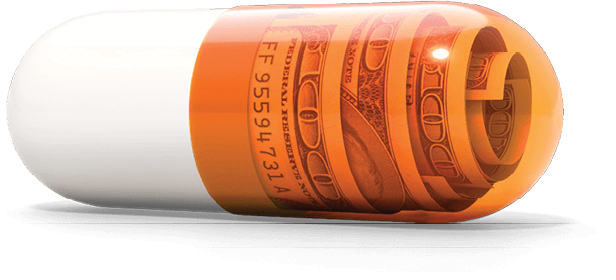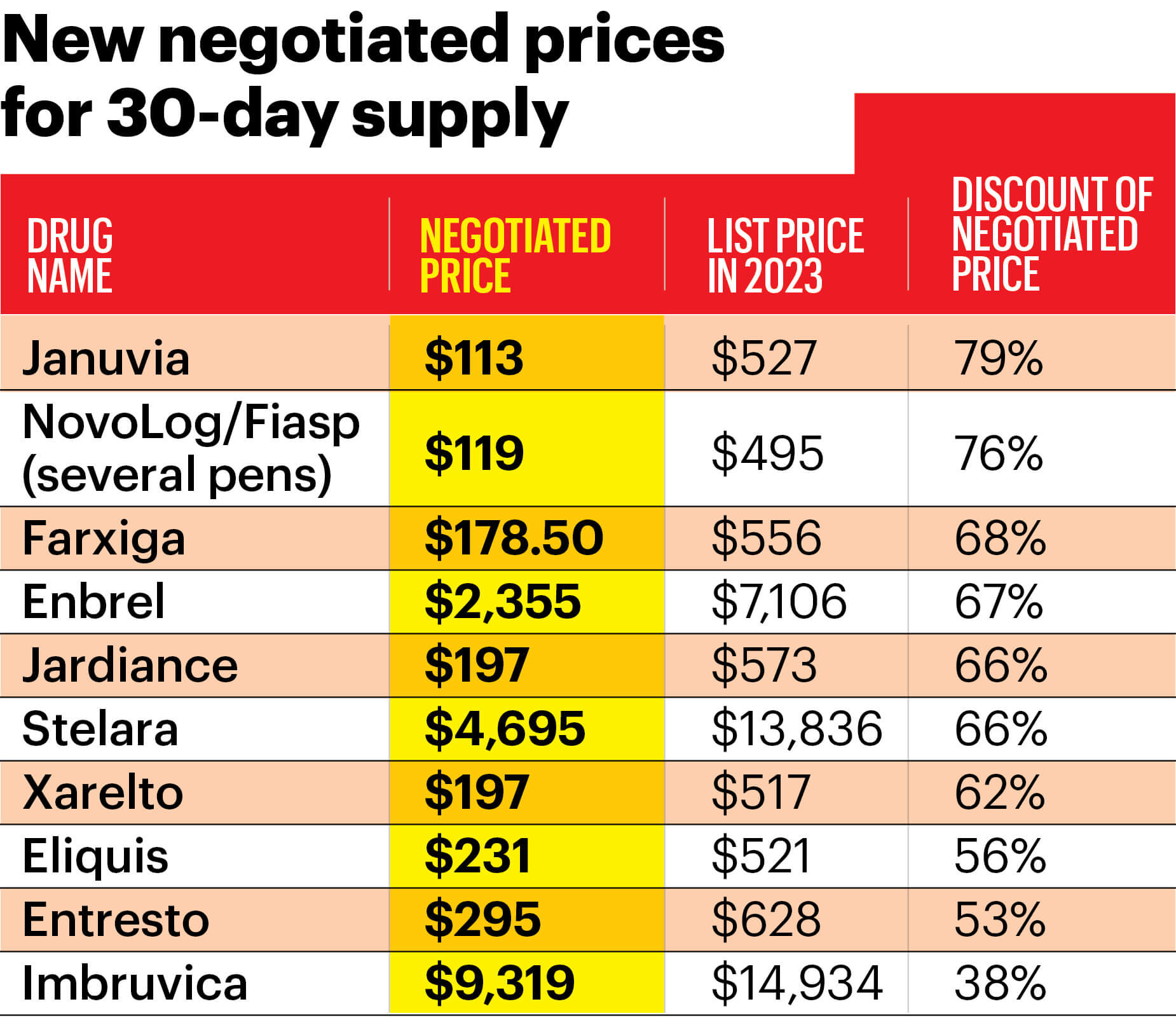In the News

DRUG NEGOTIATIONS UPDATE
LOWER MEDICARE DRUG PRICES WILL SAVE BILLIONS
The first 10 drugs for which Medicare has negotiated prices will cost less for about 9 million older adults enrolled in the program who use one or more of the medications.
The lower prices agreed upon by the federal government and drug manufacturers in August take effect in 2026. The drugs included on the list are among the most expensive and frequently used pills and injections to treat diabetes, blood clots, heart failure, arthritis, kidney disease, cancer and more, and covered under Medicare Part D.
The Centers for Medicare & Medicaid Services (CMS) estimates that as much as $1.5 billion in savings could go directly into the pocketbooks of older Americans, since Medicare Part D enrollees often pay part of a drug’s cost. And the government program could save $6 billion, based on what Medicare paid for the drugs last year.
“Americans pay way too much for their prescription drugs,” said U.S. Department of Health and Human Services Secretary Xavier Becerra on a call with reporters. “For the first time ever, Medicare negotiated directly with drug companies, and the American people are better off for it.”
Some of the negotiated prices are steep discounts compared with the drugs’ list prices. For example, a 30-day supply of Januvia, a diabetes drug, is 79 percent lower than the 2023 list price. The negotiated price for the NovoLog pen, also used for diabetes, is 76 percent lower than the list price. The other eight drugs with lower negotiated prices are Farxiga, Enbrel, Jardiance, Stelara, Xarelto, Eliquis, Entresto and Imbruvica.
AARP has long advocated for Medicare to negotiate drug prices. “This announcement of the first round of Medicare-negotiated price cuts marks a giant step forward in our ongoing efforts to lower prescription drug prices,” said AARP CEO Jo Ann Jenkins. “We will continue fighting to ensure that this is only the beginning, and not the end, of lowering prescription drug prices, bringing millions of older Americans the financial relief they need and deserve.”
Federal officials picked the 10 drugs from a list of 50 medications that Medicare Part D spends the most on and are among the most used. That arrangement was part of a law passed in 2022 that took aim at high drug prices.
The 10 selected drugs accounted for more than $56 billion in Part D spending in 2023, according to CMS. People with Medicare prescription drug coverage taking these 10 medications paid a total of $3.4 billion in out-of-pocket costs in 2022.

VA Offers Help to Military Scam Targets
Veterans, active-duty military and their families are often targets of scammers. Current and former service members reported $477 million in losses from scams last year, the Federal Trade Commission (FTC) says.
In response, the U.S. Department of Veterans Affairs (VA) launched VSAFE.gov and 833-38V-SAFE (833-388-7233). The new website and call center will coordinate efforts across the federal government to protect veterans, service members and their families from fraud and scams.
The website includes resources on identity theft and the most common scams targeting veterans, including romance and other impostor scams, fake job offers and bogus investment schemes.
The call center provides a simple way to report scams. All federal agencies will be advised to route military members and veterans reporting scams to the correct place for assistance.
“This is a positive step,” says Juanita Jiménez-Soto, AARP national veterans and military families manager, noting how crucial it is for veterans to understand the red flags for fraud. “They protected us. We should be protecting them.”
Last year, military consumers lost a median of $599 to scams reported to the FTC, which was 20 percent more than the $500 median loss reported by nonmilitary consumers, according to the FTC’s Consumer Sentinel Network Data Book 2023.
BLOOD TEST FINDS MOST COLORECTAL CANCER

Older Americans may be closer to having an effective and easier alternative to dreaded colonoscopies. In July, the Food and Drug Administration approved a blood test to screen for colorectal cancer in adults 45 and older who are at average risk for the disease.
A recent study in The New England Journal of Medicine found that the blood test developed by Guardant Health detected colorectal cancer in 83 percent of people who had the disease. That’s similar to results from stool-based screening tests, William M. Grady, M.D., a study coauthor and researcher at the Fred Hutchinson Cancer Center, told AARP earlier this year.
Blood screening tests were available through doctors. FDA approval makes it more likely insurers will cover the test, Grady says.
DISCONNECTED

Australian workers can unplug their phones and put another shrimp on the barbie under a new law that allows employees to ignore most after-hours calls and emails from a boss unless they’re absolutely essential. Employers face fines up to $63,000 for violating the law.